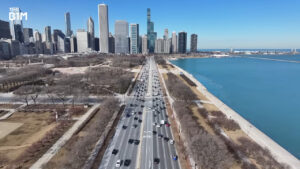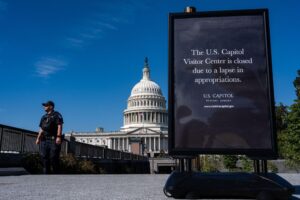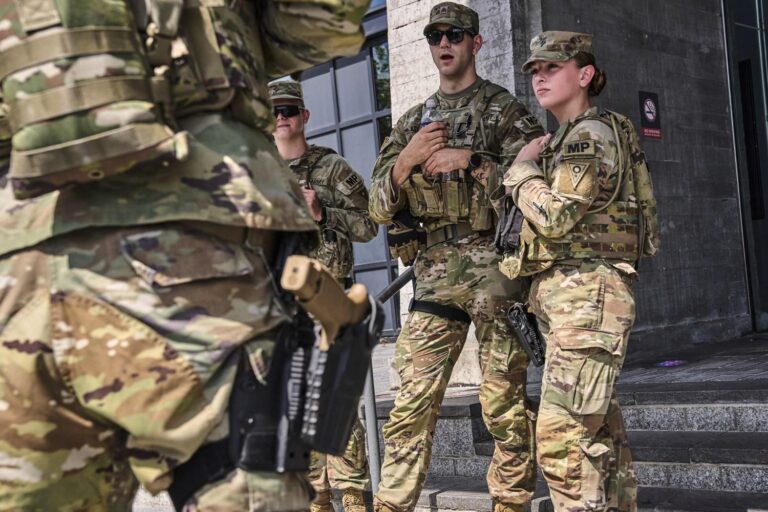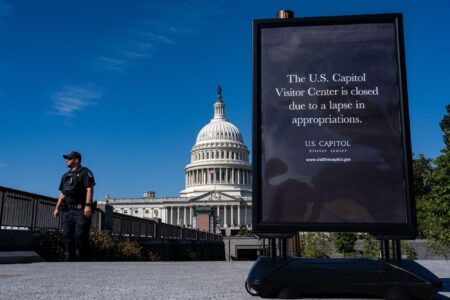Armed National Guard Deployment in Washington, D.C.: A Strategic Response to Heightened Security Threats
In light of increasing security challenges, the National Guard has been granted authorization to carry firearms while operating in Washington, D.C. This marks a pivotal change in the Guard’s role within the capital, prompted by a surge in violent incidents and credible intelligence warnings. Officials highlight that this enhanced armament is intended to strengthen law enforcement efforts and enable swift intervention during potential outbreaks of violence.
Primary reasons behind this policy shift include:
- Rising frequency of violent protests and civil disturbances in the city
- Intelligence assessments indicating imminent threats to public safety
- Requests from municipal authorities for augmented security support
| Operational Element | Prior to Authorization | Post Authorization |
|---|---|---|
| Equipment Carried | Non-lethal gear exclusively | Standard firearms authorized |
| Engagement Capacity | Unarmed support role | Authorized to engage with firearms |
| Role in Security | Assisting local law enforcement | Active enforcement and security duties |
Political Dynamics Surrounding Armed National Guard Presence in the Nation’s Capital
The decision to arm National Guard members in Washington, D.C., represents a notable shift in managing security during politically charged periods. This change coincides with upcoming high-profile events that have intensified national scrutiny. While some lawmakers and security analysts argue that a visible armed presence is essential to deter violence, others caution that it may deepen societal divisions and provoke further unrest. The debate centers on balancing the need for security with concerns about militarization of public spaces.
Moreover, former President Donald Trump’s suggestion to extend armed National Guard deployments to cities like Chicago introduces complex questions about federal involvement in local policing. Key issues fueling this discussion include:
- Federal vs. local authority: Determining the appropriate scope of federal intervention in municipal security matters.
- Community trust and perception: How armed deployments affect public confidence and police-community relations.
- Setting precedents: Whether this approach will become a standard response to urban unrest nationwide.
| Stakeholder Group | Concerns | Supportive Arguments |
|---|---|---|
| City Officials | Potential erosion of local control, public opposition | Additional security resources and rapid response capabilities |
| Federal Agencies | Political backlash, liability issues | Improved threat deterrence and order maintenance |
| Residents and Activists | Concerns over intimidation and civil liberties | Enhanced protection against violence and disorder |
Potential Expansion of Armed National Guard to Chicago Amid Growing Urban Violence
Washington, D.C. has recently seen National Guard troops equipped with firearms for the first time in years, a response to escalating security concerns following several high-profile disturbances. This policy shift reflects a more assertive security stance amid ongoing debates about public safety and civil unrest. Proponents argue that an armed presence is crucial to deter violence and safeguard both government infrastructure and civilians, while critics warn it could exacerbate tensions.
Simultaneously, former President Donald Trump has identified Chicago as a likely candidate for expanded armed National Guard deployment, citing the city’s persistent struggles with violent crime and gang-related activity. This proposal has sparked discussions about the coordination required between federal, state, and local authorities and the potential impact on community relations.
- Washington, D.C.: Current deployment of armed National Guard units
- Chicago: Consideration for expanded armed National Guard presence
- Security concerns: Balancing increased protection with risks of escalation
- Interagency cooperation: Essential collaboration among federal, state, and local entities
| City | Current National Guard Status | Potential Expansion |
|---|---|---|
| Washington, D.C. | Active armed National Guard deployment | Not applicable |
| Chicago, IL | Limited National Guard presence without firearms | Possible expansion including armed units |
Ensuring Accountability and Transparency in Armed National Guard Operations
With the National Guard now carrying firearms in Washington, D.C., experts stress the importance of establishing clear and comprehensive operational protocols to prevent misunderstandings and safeguard public welfare. Both military and civilian leaders agree that open communication between the Guard, local law enforcement, and community representatives is vital. Such collaboration not only helps maintain order but also fosters public trust during deployments where armed personnel are present in civilian environments.
Recommended best practices include:
- Explicit rules of engagement: Defining precise conditions for the use of force
- Robust accountability systems: Implementing body cameras and thorough incident reviews
- Community engagement: Creating advisory boards and forums to address public concerns
- Ongoing transparency: Providing regular updates and media briefings
| Focus Area | Recommended Measures |
|---|---|
| Rules of Engagement | Clear guidelines to prevent misuse of firearms |
| Accountability | Use of body-worn cameras and after-action evaluations |
| Community Relations | Establishment of local advisory councils and public forums |
| Transparency | Regular public communications and press conferences |
Looking Ahead: The Future of Armed National Guard Deployments in Urban Centers
The introduction of armed National Guard units in Washington, D.C. signals a notable intensification of security protocols amid ongoing political and social tensions. With former President Trump advocating for similar measures in Chicago, the nation watches closely as these developments unfold. The evolving landscape highlights the delicate balance between ensuring public safety and preserving civil liberties, underscoring the complexities faced by authorities in managing security within major metropolitan areas across the United States.





